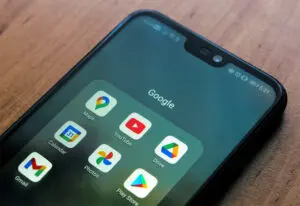
Is A Buyer Persona Still A Useful Marketing Tool?
Meet Jane. She’s 20 years old, works out five days a week, eats a vegan diet, and shops sustainably. No, this isn’t Jane’s dating profile; it’s her buyer persona. And, for brands, having defined personas can be the difference between marketing that connects and campaigns that miss the mark.
Buyer Persona Defined
If it’s unclear from the intro, a buyer persona helps brands define (and personify) their key consumer audiences. This marketing tool is typically used in the initial branding/rebranding phase at the same time you’d be specifying your target audience. Although it can be considered a brand exercise (as buyer personas are internal tools), having them can give you a clearer idea of the direction your marketing and messaging needs to go.
In essence, they represent your ideal customer.
On that note, what are negative buyer personas?
A negative buyer persona is the opposite—it’s who you don’t want as a customer. This part of the process is optional, but it can be helpful to know which audiences you can exclude from the marketing process.
Why It’s A Good Tool To Have
Of all the marketing tools available, investing time and resources into buyer personas can pay dividends. They help your brand:
Start a Step Ahead Of Your Competition
Ideally, you’d ideate a buyer persona as early as your brand positioning and identity. By starting in these early stages, you can gain a clearer picture of your ideal audience members: what makes them tick, how they could use your brand, and what problems your product/service will solve.
When you start early, you can get ahead of your competitors and gain brand loyalty by meeting their needs first. If you’re reading this and your brand is already a few years old, don’t fret. You can create buyer personas and implement them at any stage.
Get an Understanding Of Audience(s)
For the type of long-term loyal fan base you’re craving as a brand, relationships with your customers need to be genuine, not transactional. When you treat your customers and potential customers with empathy, you are better able to meet their needs. With a buyer persona, you’re practicing empathy at the brand scale. By personifying an audience’s needs (even if some things are generalizations), you can understand them on a deeper level.
By understanding them in this way, you can identify the topics they want to hear about, solve problems they have, and offer valuable solutions.
Gain Audience Trust
Let’s face it: all brands want to be trusted. Not only does this long-term loyalty typically lead to impressive conversions, but it’s also a very good indicator of a legacy brand. But gaining trust in a saturated market and overcrowded social platforms can be tricky. Having a buyer persona as your guide post allows you to improve your customer experience and service, target your offerings and messaging, and meet your customer’s core needs.
By doing all of the above consistently, you’re following through on your word as a brand which, over time, translates into the all-important trust.
Optimize Targeting & Messaging
The last benefit to these buyer personas is content and targeting optimized for your audience and your brand goals. Armed with this detailed audience information, you can personalize content to resonate authentically with your potential customers. This is especially helpful if your brand is catering to a few fairly different demographics—a persona will guide you on the messaging, tone, and channel that will work best.
How To Create a Buyer Persona
Now to the good stuff! Whether you hire a professional agency to create a buyer persona document or work internally, this is the how-to process:
Start With Research
All good marketing begins with research, or so the proverb goes (right?). No matter your brand promises, goals, or timeline, research is as necessary to good marketing as service is to keeping customers. Before creating a buyer persona, you should do a deep dive into your potential audience(s).
Define details like their age, location, interests, spending power, life stage, social media habits, etc. This is also the time to compare who your competitors are targeting and what seems to be working for them. Not to mention, it will give you an idea of what gaps your brand can fill.
Define The Pain Points (“The Why”)
Once you have the basic demographics of your audience(s), it’s time to analyze the psychographics. It’s this step where you get to their “why.” Why would they want to use your products/services over your competitors? Why would they be seeking out a brand like yours to begin with?
These pain points help you to establish the problems potential customers might face and how you can solve them. One of the most effective ways to gather this information is through social listening and analyses of your brand/products (if you’ve already launched) and your competitors (if you’re just starting out).
Understand Your Brand Differentiators (“The How”)
While your brand differentiators might be your why, they are also how you will solve your customers’ problems. Defining these key elements before building your personas will help you outline why your target customers would choose your products/services over another brand. They also help put you in the shoes of your customers because if you’re not solving their needs and thinking as they think, you’re missing big opportunities.
Build Your Archetypes
Once you’ve done your due diligence in the research department, it’s time to personify! Like any characterization, it’s important to remember that a buyer persona doesn’t represent every buyer in your audience. It’s helpful to think of them as audience archetypes—the type of people you’d like to target.
Before creating each persona, establish how many audiences you’ll be representing. Sometimes this looks like titling the audience with something obvious like “Gen Z” and, sometimes, it looks like giving names such as “The Weekend Adventurer” or “The Amateur Photographer.” Then, give your archetype a name, age, interests, habits, and characteristics (see examples in the “Seeing Personas In Action” section below). As you’re putting together your personas, think back to those pain points and where your brand might fit into their lifestyle.
If you need, these starter questions can help:
- Where do they work?
- Do they have any hobbies? Where do they spend their free time?
- What are their personal/career goals?
- What do they value?
- What drives their decision-making?
- How do they get information?
- How much time do they spend online?
- What’s their favorite website or social media platform?
And, as with most things, simple is best. Keep the personas concise, clear, and interesting,
Use a Tool
This is more of a sub-step but can help if you’re stuck. Using a tool like a Buyer Persona Template (like these from HubSpot and SEMRush) outlines each step of the process with editable and customizable templates that you can use for different audiences. Another more guided tool is HubSpot’s Make My Persona that’s an interactive step-by-step persona builder.
If you choose not to go it alone, a digital marketing agency can help you create buyer personas during the marketing research process. At Savy, defining these personas is a tool that helps us establish the brand’s voice, tone, channels, and marketing strategies.
Implement Your Persona
When you’ve put together your personas, it’s time to see them in action with your marketing and messaging. In this step, you’ll use the data you learned in the research phase and the understanding you gained when you personified your audiences. With these tools, you can create integrated marketing campaigns that resonate with your brand’s ideal customers and create long-term trust.
Seeing Personas In Action
Even with a clear idea of what a buyer persona is, we think it’s always helpful to see things in action.
Example 1:
Natural ice cream brand targeting Millennial parents and their kids
Meet Jessica. The 35-year-old stay-at-home mom has three children under the age of five. As a busy parent, Jessica spends most of her days putting together activities for her toddlers. An avid TikTok and Instagram user, she’s molded her parenting style to accounts that use gentle parenting techniques. She’s constantly scrolling to find healthy ways to entertain and feed her littles and she values brands that cater to moms and have kids’ best interests in mind. When looking for a sweet treat for her kids, she’s had difficulty finding something that’s not overly processed or way out of budget. Like most kids (and parents), Jessica’s littles love ice cream, but she worries about giving them too much sugar. She’s looking for a brand that offers naturally flavored, lower-sugar alternatives that can satisfy her kids’ sweet tooths and not put a huge dent in her budget. It’s an added bonus if the company is mom-owned.
Example 2:
Sustainable hat company targeting Gen Z
Meet Jacob. The 18-year-old just started college and is in the process of establishing his style. Like most of his peers, he’s loyal to brands that are sustainable, honest about their values, and unique. Going to school in Southern California, Jacob spends much of his free time outside—skateboarding, surfing, studying, and listening to music. As his style has evolved, he’s gotten into hats and uses them nearly every day to complete his looks (and protect his skin).
He was immediately sold when he found Caps through an influencer’s account. The unique hats are versatile, eye-catching, and made of recycled materials. The company’s mission to combat “fast fashion” is one of the reasons Jacob keeps purchasing from them and referring to his friends.
Example 3:
Camera brand targeting world travelers, both amateur and professional photographers
(Audience 1; amateur photographers): Meet Clay. The 42-year-old has been traveling the world for work since his mid-twenties. During his trips, Clay makes the most of his time in a new country by exploring the sights and attempting to see the area as the locals do. Photographing these moments was a natural extension of his love for other cultures. Although he’s still an amateur, he’s intrigued by Snapper’s affordable camera line geared toward travelers—especially with the camera’s extreme durability and the exceptional customer service he’s read about on their site.
(Audience 2; professional photographers): Meet Diana. The 25-year-old Instagram phenomenon wows her followers with photography from around the world. She’s used almost every camera brand out there and often has partnerships with her favorites. She found Snapper through a mutual photographer friend and was immediately struck by their different approach to photography—both for amateurs and professionals. If interested in a long-term partnership, Snapper has the potential for millions of views from Diana’s following.
So, Is A Buyer Persona A Useful Tool? We Think So.
At this point, we’ve answered our own question about the usefulness of a buyer persona for your brand. With the right research and thoughtful personification, these personas can give you a deeper understanding of your audience, establish your ideal customer(s), gain lasting trust, and design more impactful campaigns. Want to see what we can do for your brand? Let’s chat.
Recent Posts
Custom Website Design and Development vs. Off-the-Shelf: What’s Right for Your Business?
Having a website that represents your brand and serves your business effectively can make or break your success in 2025. This poses the important question: Should you opt for custom […]
Read MoreHow to Rebrand Your Instagram for Better Engagement and Brand Recognition
Your Instagram presence can act as a beacon for brand recognition and customer engagement. It’s about painting a picture so compelling that your audience cannot help but be drawn to […]
Read MoreFrom Clicks to Conversions: The Science of High-Performing Digital Ads
The journey from interest to purchase is often paved with digital advertisements. However, not all digital ads are crafted equally. While some fade into the background, others command attention and […]
Read MoreBrand Consistency Examples That Will Make You Rethink Your Marketing Strategy
A consistent and strategic brand identity across all platforms is not just beneficial; it’s essential. By exploring real-world brand consistency examples, we uncover the immense power of maintaining a coherent […]
Read More3 Ways to Transform Blogs With SEO and Make Google Love Your Content
As marketers and business owners, our goal is to ensure the blogs we publish confidently stride into the spotlight of Google’s top search results. Achieving this requires great content, but […]
Read More



